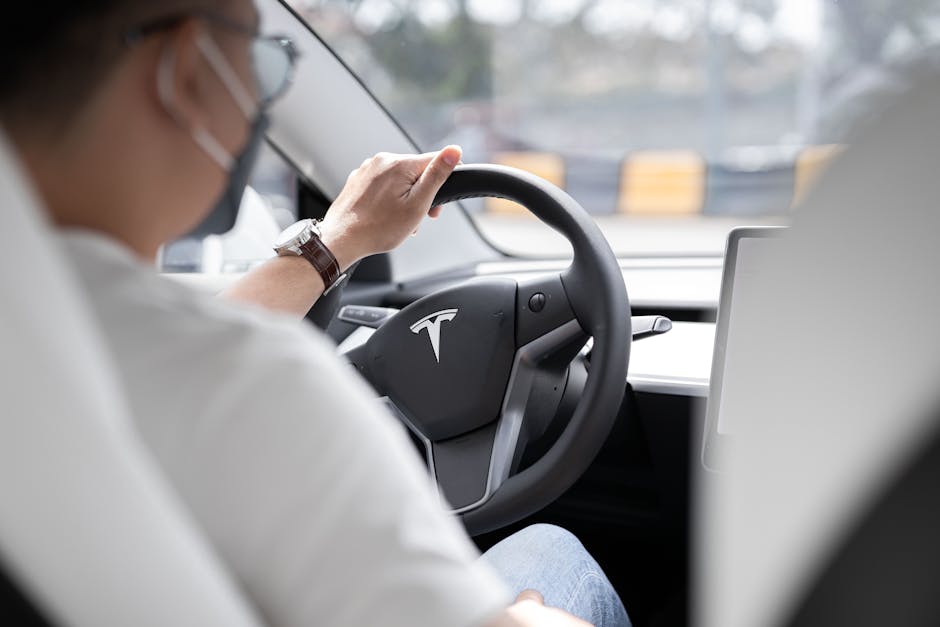Future car innovations: 10 Game-Changing Trends for 2025
The Age of Automotive Reinvention
Future car innovations are rapidly changing vehicles from basic transportation tools into connected, intelligent mobility ecosystems. If you’re curious about what’s coming next in automotive technology, here’s what you need to know:
- Software-Defined Vehicles: Cars becoming “computers on wheels” with over-the-air updates
- Electric & Alternative Powertrains: Solid-state batteries, solar paint, and micro-converters
- Autonomous Systems: Level 3+ automation with advanced sensor fusion
- Immersive Experiences: AR windshields, biometric interfaces, and return of physical controls
- Sustainable Materials: Bio-based resins, recycled components, and cradle-to-cradle design
The automotive world is experiencing its most substantial change since Henry Ford industrialized manufacturing a century ago. As Mercedes-Benz’s research team puts it, “Pioneering spirit has been part of our DNA for almost 140 years” – and that spirit is now accelerating across the entire industry.
Cars of tomorrow won’t just look different – they’ll fundamentally change how we interact with transportation. MIT’s groundbreaking DrivAerNet++ dataset, which includes more than 8,000 distinct, physically accurate 3D car designs, demonstrates how AI and open-source development are speeding up innovation. These designs were generated using over 3 million CPU hours, producing 39 terabytes of data – nearly four times the size of the entire printed Library of Congress.
What’s most exciting is how quickly these technologies are moving from concept to reality. Mercedes-Benz’s solar paint technology could generate enough electricity for more than 7,450 miles of driving per year for a mid-size SUV. Continental’s UltraContact NXT tire is already incorporating a majority of sustainable materials. And China is expected to sell more electric vehicles than combustion engine vehicles in 2025.
The future isn’t some distant horizon – it’s arriving in showrooms and on roads right now.

Future car innovations basics:
– Advanced car technology
– innovative racing technology
Why Op-Eds Matter in Tech Discourse
At Car News 4 You, we believe that opinion leadership is crucial in shaping how society adopts transformative technologies. The cars we drive aren’t just metal boxes on wheels—they’re expressions of our values, priorities, and vision for the future. By critically examining future car innovations, we can help steer the industry toward developments that serve human needs while addressing environmental challenges.
As we’ve seen with the rapid adoption of electric vehicles in markets like China, technological shifts can happen faster than predicted when the right combination of innovation, policy, and consumer interest aligns. Our role is to contextualize these changes and help you understand not just what’s coming, but why it matters.
The Software-Defined Revolution
The most profound shift in automotive design isn’t visible from the outside—it’s happening in the code. Modern vehicles already contain more than 100 million lines of code, but future car innovations will transform cars into sophisticated computing platforms that continuously improve through over-the-air updates.
The days of cars being just mechanical marvels are behind us. Today’s vehicles are essentially computers with wheels attached. As one industry expert put it, “Vehicles are evolving into ‘smartphones or computers on wheels’ rather than just metal boxes on four wheels.” This fundamental shift means software capabilities now drive hardware decisions, completely flipping traditional design approaches.

At the heart of this revolution are specialized AI chips from companies like Qualcomm, NVIDIA, and Intel that power increasingly sophisticated functions. But the real game-changer might be something even more exciting: neuromorphic computing. This technology, being researched by Mercedes-Benz, mimics the human brain’s architecture to process information more efficiently.
What’s the benefit? According to Mercedes-Benz researchers, “Neuromorphic computing could cut autonomous driving energy consumption by 90% and process events instead of full image frames.” Think about how you drive—you don’t analyze every pixel in your field of vision; you notice changes and respond to them. This is exactly how these systems work, allowing vehicles to react more naturally and efficiently.
Future car innovations in code not chrome
Remember when getting new features meant buying a new car? Those days are fading fast. The shift to software-defined vehicles means that tomorrow’s innovations will increasingly arrive through wireless updates rather than model changes.
Tesla pioneered this approach, improving acceleration, range, and features through over-the-air updates. Now the entire industry is following suit. Your next car might actually get better the longer you own it—how’s that for reversing depreciation?
Event-based cameras represent another breakthrough that sounds like science fiction but is very real. Unlike conventional cameras that capture frames at fixed intervals (think 30 frames per second), these smart sensors only register changes in a scene. This dramatically reduces processing requirements while improving reaction times—perfect for split-second driving decisions.
When combined with cloud platforms that share learning across entire fleets, these technologies enable cars to continuously improve their performance and safety. Your car literally learns from every other car on the road with the same system.
Mercedes-Benz is taking this concept even further with digital twins—virtual replicas of physical vehicles used to test updates before deployment. This approach allows manufacturers to simulate thousands of scenarios without physical prototyping, making development faster, safer, and more affordable. It’s like having a practice version of your car living in the cloud.
From Dataset to Driveway: Open-Source Acceleration
One of the most exciting developments in automotive innovation is something you might not expect: open-source data sharing. MIT’s DrivAerNet++ dataset, which includes more than 8,000 distinct, physically accurate 3D car designs, represents a complete paradigm shift in vehicle design.
Mohamed Elrefaie, one of the MIT researchers behind the project, explains: “This dataset lays the foundation for the next generation of AI applications in engineering, promoting efficient design processes, cutting R&D costs, and driving advancements toward a more sustainable automotive future.”
Why does this matter to you? Traditionally, car design has been secretive, proprietary, and progress happened in small steps. With open datasets containing 39 terabytes of data (that’s nearly four times the size of the entire printed Library of Congress!), designers can use AI to explore thousands of variations and predict their performance without building expensive physical prototypes.
As Faez Ahmed, another MIT researcher, puts it: “Often when designing a car, the forward process is so expensive that manufacturers can only tweak a car a little bit from one version to the next…with larger datasets…you are more likely to get a better design.”
This democratization of design data could be particularly valuable for electric vehicles, where aerodynamics directly impacts range. By training AI models on comprehensive datasets like those found in Advanced Car Technology, designers can optimize shapes for efficiency without the expensive trial-and-error process that has dominated automotive development for decades.
The result? More efficient, affordable, and innovative vehicles arriving in your driveway faster than ever before. The real revolution in automotive design isn’t happening on assembly lines—it’s happening in data centers and software labs around the world.
Electric, Hybrid & Beyond-Battery Powertrains
The electrification revolution isn’t just coming – it’s already here. China is expected to sell more electric vehicles than gas-powered ones by 2025. But future car innovations in powertrains are about much more than swapping gas tanks for batteries.
Solid-state batteries might be the game-changer we’ve all been waiting for. These next-gen power sources promise to deliver everything current lithium-ion batteries can’t quite manage – higher energy density, better safety, lightning-fast charging, and much longer lifespans. Industry experts think they’ll hit production between 2025 and 2030, potentially making range anxiety a thing of the past while bringing charging times down to just minutes.

Even more mind-blowing is Mercedes-Benz’s solar paint technology. Imagine a coating thinner than a human hair (just 5 micrometers thick) that can generate electricity from your car’s body panels.
“At 20% efficiency and 118.4 ft² coverage, solar paint could provide up to 7,456 miles of driving per year under ideal conditions,” according to Mercedes-Benz. “This could cover 62% of average daily Stuttgart driving, and up to 100% in Los Angeles, with surplus energy potentially fed into the home network.”
That’s right – your car could power your home when you’re not driving it!
Future car innovations that outcharge today
The electrical systems in our vehicles are evolving faster than many realize. The old 12-volt systems are giving way to 48-volt mild hybrids, while fully electric vehicles are increasingly moving toward 800-volt architectures that enable super-fast charging.
Mercedes-Benz is pushing boundaries again with their research into programmable micro-converters at the battery cell level. This clever tech could maintain an 800-volt output no matter what state your battery is in, while enabling bidirectional charging that transforms vehicles into mobile power stations for homes or even the grid.
As one Mercedes-Benz researcher explains, “Cell-level micro-converters create a modular high-voltage architecture that can maintain consistent performance even as individual cells age.” This approach could not only extend battery life but also boost overall system efficiency – a win-win for drivers and the environment.
Alternative Fuels Keep the Options Open
While electric vehicles grab most headlines, future car innovations include a diverse menu of alternative powertrains. The European Commission has conditionally approved e-fuels for use after 2035 under zero-climate-impact rules, potentially giving internal combustion engines a new lease on life.
Hydrogen fuel cells continue showing real promise, especially for heavy-duty applications where batteries might not be practical. Hyundai is exploring ways to produce green hydrogen from organic waste, creating a truly circular energy system. This approach could be particularly valuable in regions where charging infrastructure remains limited.
“We’re seeing a shift toward hybrids as more adaptable and cost-effective solutions in the near term,” notes an industry analyst. This practical approach recognizes what many of us already know – different driving needs may require different solutions, and no single technology is likely to dominate everywhere.
The future of car powertrains isn’t about picking a single winner – it’s about having a diverse toolbox of clean technologies to fit different needs. Whether you’re commuting in a city or crossing a continent, the Electric Vehicles of tomorrow will have you covered with range, power, and convenience that today’s cars can only dream of.
Autonomous & Always-Connected Roads
The dream of self-driving cars hasn’t disappeared – it’s just evolving in more practical ways. While those sci-fi visions of fully autonomous vehicles (Level 5) remain on the horizon, Level 3 systems that handle most driving tasks under specific conditions are already hitting the roads, with even more impressive capabilities coming soon.
“There are six levels of driving automation; only Level 3 and some Level 4 vehicles are commercially available,” explains an industry report. These systems use a clever combination of cameras, radar, and sometimes LiDAR to “see” the world around them, with AI doing the heavy lifting of interpreting all that data into actual driving decisions.

What’s really interesting is how the approach to autonomy is shifting. Rather than putting all the smarts (and expensive sensors) in each car, future car innovations are embracing infrastructure-based solutions that can make even basic vehicles capable of some autonomous features.
Take Continental’s clever demonstration of infrastructure-based autonomous valet parking. Using cameras mounted in parking garages and simple QR codes, they’ve created a system that can guide vehicles without requiring fancy onboard equipment. Imagine pulling up to a mall, stepping out, and watching your car park itself – without needing a luxury price tag.
Future car innovations behind the wheel… without you
The technical challenges of autonomy are being tackled through something called sensor fusion – basically combining data from multiple sensors to create a more complete picture of what’s happening around the vehicle. Early autonomous prototypes relied heavily on expensive LiDAR systems (those spinning things you see on roofs), but manufacturers are now developing “LiDAR-lite” approaches that combine cameras and radar to achieve similar results without the steep cost.
Edge computing is another game-changer, allowing vehicles to process sensor data right there in the car rather than sending everything to the cloud. This approach cuts down on delay – absolutely critical when making split-second safety decisions – while also keeping more of your data private by minimizing what gets transmitted elsewhere.
“The next generation of autonomous systems will use event-based neuromorphic computing to process sensor data more efficiently,” predicts a Mercedes-Benz researcher. “This could reduce energy consumption by 90% compared to current approaches.”
The Smart City Testbeds Already Live
The full potential of self-driving cars can only bloom in smart cities with connected infrastructure. Mercedes-Benz’s “London 2040+” vision gives us a peek at this future: imagine centralized parking hubs connecting cars, bikes, and public transit; electric vans and cargo bikes handling last-mile deliveries; and green roofs, dedicated bicycle highways, and robo-taxis reducing traffic congestion.
The secret sauce making all this possible is Vehicle-to-Everything (V2X) communication, allowing cars to talk to infrastructure, traffic signals, and even each other. Using 5G networks, your car could receive real-time updates about traffic jams ahead, road hazards around the corner, or that perfect parking spot that just opened up two blocks away.
“By 2040+, over 50% of private vehicles in Los Angeles could be fully electric, with many equipped with photovoltaics,” projects Mercedes-Benz. Their vision includes vertical traffic patterns and drone deliveries, creating a multi-dimensional transportation network that squeezes maximum efficiency from our urban spaces.
The exciting part? Some pieces of this connected future are already being tested. Google Maps now shows real-time EV range data through Android Auto to help ease range anxiety, while Volkswagen is bringing ChatGPT into their vehicles to make those in-car voice assistants more conversational and actually helpful in context.
At Car News 4 You, we’re watching these connected mobility developments closely because they represent not just technological evolution, but a fundamental rethinking of how we move through our world – together, connected, and increasingly hands-free.
Immersive In-Car Experiences
Remember when cars were just about getting from A to B? Those days are fading fast. As vehicles become more autonomous, what happens inside the cabin is becoming the new frontier of automotive innovation. Future car innovations are changing our vehicles from simple transportation into personalized living spaces on wheels.
BMW’s i Vision Dee concept shows just how far we’ve come with its Mixed Reality Slider – a feature that lets you adjust how much augmented reality covers your windshield. Want just navigation info, or a full immersive experience? You choose. According to BMW, we could see this technology in their Neue Klasse electric vehicles as soon as 2025.

Mercedes-Benz has similar visions, imagining cars that transform based on your needs – office space during your commute, living room for relaxation, cinema for entertainment, or even a hotel room on longer journeys. As one Mercedes-Benz researcher put it, “The automobile of the future will be a multi-functional space that adapts to the needs of its occupants.”
Future car innovations that blur reality
The tech making these experiences possible is advancing at breakneck speed. Continental has showcased a curved 48-inch 8K touchscreen with 8,000 LED dimming zones that creates a truly immersive visual experience. Pair that with advanced haptic feedback, and you’ve got digital interfaces you can actually feel.
Interestingly, physical buttons are making a comeback alongside these digital wonders. It turns out we humans still crave that satisfying click of a real button. Industry reports confirm that “focus groups show drivers prefer tactile controls,” and updated safety standards are actually requiring buttons for top safety ratings. Sometimes the future looks a bit like the past – just better.
AR dashboards are another game-changer. Instead of glancing down at your navigation screen, these systems project directions and alerts directly onto your windshield. Several luxury brands have already integrated these features, helping drivers stay informed without taking their eyes off the road. It’s like having your own personal co-pilot right there with you.
Safety Meets Entertainment
The beauty of these immersive cabins is that they’re not just about fun – they’re making driving safer too. Modern driver monitoring systems use infrared cameras to track your eye movements, detecting if you’re getting drowsy or distracted. Lamborghini’s taking it even further with their Telemetry X system, which uses your biometric data to give personalized driving coaching. It’s like having a racing instructor who knows exactly what you need.
Sound is becoming another dimension of the in-car experience. Mercedes-Benz has partnered with Dolby to bring Atmos sound to their vehicles, creating concert-hall quality audio during your daily commute. As one industry analyst put it, these systems will “transform mundane drives into concert-like experiences.” Your morning traffic jam might still be annoying, but at least it’ll sound amazing.
Biometric access is also gaining ground, with facial recognition and fingerprint scanning replacing traditional keys. Continental’s dual-factor facial recognition system even includes infrared “liveness detection” to prevent spoofing – ensuring only you (the actual, living you) can access your vehicle.
These developments represent a fundamental shift in how we think about cars. They’re becoming extensions of our digital lives, personal spaces that know us and adapt to our needs. And as we explore more of these luxury car technology innovations, one thing becomes clear – the car of tomorrow will be as much about the journey as the destination.
Sustainable Materials & Circular Design
The automotive industry is experiencing a green revolution, and future car innovations aren’t just about flashy tech—they’re about creating cars that tread more lightly on our planet. This shift toward sustainability isn’t just good PR; it’s becoming fundamental to how cars are designed and built.
Take Continental’s UltraContact NXT tire, for example. It’s a remarkable example of eco-innovation, incorporating bio-based resins made from paper and wood waste, rice husk ash silicates, and even recycled rubber and steel. “Continental aims for 40% sustainable materials across its tire lineup by 2030,” the company reports—a goal that would have seemed far-fetched just a decade ago.

Mercedes-Benz is pushing boundaries even further, experimenting with materials that sound like they belong in a sci-fi novel: synthetic silk yarn and leather alternatives made from recycled plastic. What’s fascinating is that these aren’t compromise materials—they often perform better than their traditional counterparts.
“Sustainability and luxury go hand in hand,” Mercedes-Benz boldly states, challenging the old assumption that eco-friendly means lower quality. In fact, many of these sustainable materials offer unexpected benefits: they’re lighter (improving efficiency), more durable (extending vehicle life), and sometimes even more beautiful (enhancing the luxury experience).
Future car innovations you can feel good about
Beyond just swapping materials, manufacturers are reimagining fundamental car components with sustainability in mind. Mercedes-Benz has developed an ingenious in-drive brake system that integrates directly into the electric drive unit. This clever design creates a virtually maintenance-free system that never rusts and produces zero brake dust—addressing a significant source of particulate pollution that most of us never think about.
Airless tires represent another potential game-changer. While still in development, these innovative designs would eliminate both flat tires and the need to maintain proper air pressure. Imagine never having to pull over with a flat again, while simultaneously reducing waste from discarded tires!
The electric revolution has opened new doors for vehicle architecture too. Without bulky engines and transmissions, designers are free to rethink the entire vehicle layout. The popular “skateboard” approach—placing batteries and motors in the floor—not only creates more interior space but improves handling through a lower center of gravity. It’s a win-win that shows how sustainability can drive innovation rather than restrict it.
Manufacturing Reimagined
3D printing is quietly changing how cars are made, enabling on-demand production of complex parts without traditional tooling. This approach dramatically reduces waste while allowing for greater customization and faster design iterations. For small-volume specialty parts, it’s already becoming the method of choice at many Automotive 3D Printing Applications.
“Mixed-reality tools in R&D reduce physical prototypes, saving time and raw materials,” Mercedes-Benz reports. By evaluating designs in virtual reality before physical production, engineers can spot and fix problems earlier, saving resources and improving the final product.
Perhaps most profound is the shift from linear to circular thinking in the automotive supply chain. The old model—extract raw materials, manufacture, use briefly, then discard—is giving way to a more thoughtful approach where vehicles are designed from the beginning to be disassembled and recycled.
| Aspect | Traditional Supply Chain | Circular Supply Chain |
|---|---|---|
| Materials | Virgin resources | Recycled, bio-based |
| Design | Optimized for production | Designed for disassembly |
| Manufacturing | Mass production | On-demand, localized |
| Use Phase | Single owner | Shared, subscription |
| End of Life | Landfill, downcycling | Remanufacturing, upcycling |
| Carbon Footprint | High | Significantly reduced |
| Resource Efficiency | Low | High |
This circular approach extends to manufacturing facilities themselves. BMW is using artificial intelligence to optimize energy usage in its factories, reducing carbon emissions while improving efficiency. These smart factories demonstrate that sustainability initiatives often lead to better business practices overall—saving money while saving the planet.
The road to sustainable mobility is still being paved, but these Automotive Sustainability Initiatives show that the industry is accelerating in the right direction. With materials that are kinder to the Earth and manufacturing processes that waste less, tomorrow’s cars won’t just be exciting to drive—they’ll be vehicles we can feel good about owning.
Frequently Asked Questions about Future Car Innovations
Are fully self-driving cars really around the corner?
The dream of hopping into your car, telling it where to go, and then taking a nap? Not quite there yet.
While tech companies and automakers love sharing videos of cars driving themselves, the reality is more nuanced. Full Level 5 autonomy (cars that can drive anywhere, anytime, without human input) is still likely a decade or more away. Most experts now predict market-ready city and highway autonomy around 2030, with complete Level 5 capabilities more realistically arriving closer to 2040.
What we’re seeing instead is a step-by-step evolution. Today’s Level 3 systems can handle highway driving under good conditions, but still need you to take over when things get tricky. It’s like having a teenage driver behind the wheel – helpful, but you wouldn’t want to fall asleep!
The good news? The safety technologies that will eventually enable full autonomy are already making our roads safer. Features like automatic emergency braking, lane-keeping assistance, and adaptive cruise control are preventing accidents today, even if they’re not quite ready to take over completely.
Will solid-state batteries end charging anxiety?
If you’ve ever anxiously watched your EV’s range counter tick down while searching for a charger, solid-state batteries might be your future savior.
These next-generation power sources aren’t just marginally better than today’s lithium-ion batteries – they’re potentially revolutionary. With higher energy density (more range), faster charging (minutes, not hours), improved safety (less fire risk), and longer lifespans (more years before replacement), solid-state technology addresses virtually every pain point EV owners experience today.
Industry experts expect the first production vehicles with solid-state batteries between 2025 and 2030. When they arrive, ranges exceeding 500 miles and charging times comparable to filling a gas tank could finally make “range anxiety” a thing of the past.
But even the best battery can’t help if there’s nowhere to charge it. The real solution requires both better batteries and more widespread charging infrastructure. Fortunately, both private companies and governments are investing heavily in charging networks, recognizing that accessible charging is essential for mass EV adoption.
How soon will immersive AR dashboards be mainstream?
Remember when smartphone screens seemed impossibly futuristic? Augmented reality windshields make today’s digital dashboards look positively ancient by comparison.
The technology is evolving quickly. Luxury brands like BMW, Mercedes-Benz, and Audi already offer basic AR features in their head-up displays, projecting navigation arrows and safety alerts that appear to float on the road ahead. But this is just the beginning.
BMW’s eye-catching Mixed Reality Slider concept shows where we’re headed – a system that can transform your entire windshield into an adjustable AR/VR display. The company plans to introduce this technology in its Neue Klasse electric vehicles starting around 2025. Continental and other major suppliers are developing similar systems, suggesting the technology will eventually trickle down to mainstream vehicles.
The biggest hurdle isn’t technical but regulatory. Safety standards are still evolving to address concerns about driver distraction. The challenge is finding the right balance – using AR to improve awareness rather than divert attention. When implemented thoughtfully, these systems could actually improve safety by highlighting hazards and keeping your eyes on the road instead of on a dashboard screen.
At Car News 4 You, we believe AR dashboards will follow the same adoption curve as other automotive technologies – appearing first in luxury vehicles before becoming standard features across the market within a decade.
Conclusion
The automotive landscape is changing before our eyes, and at Car News 4 You, we believe the most thrilling competition isn’t happening on racetracks but in research labs and design studios worldwide. We’re witnessing something truly special – a perfect storm where software innovation, electric powertrains, autonomous capabilities, immersive experiences, and sustainable materials are converging to redefine mobility itself.
As MIT researcher Mohamed Elrefaie puts it: “This is the best time for accelerating car innovations, as automobiles are one of the largest polluters in the world…the faster we can shave off that contribution, the more we can help the climate.” His words remind us that future car innovations aren’t just about creating cooler vehicles – they’re about addressing urgent environmental challenges that affect us all.
Remember when car model updates used to take 5-7 years? Those days are vanishing. Digital development tools, AI-assisted design, and agile manufacturing have compressed innovation cycles dramatically. The 2030 car will differ from today’s models as profoundly as your smartphone differs from the flip phone you might have carried twenty years ago.
For those of us who love cars, this rapid evolution promises more exciting, capable, and personalized vehicles. But the benefits extend far beyond enthusiasts – society gains safer, cleaner transportation systems, and our planet receives a fighting chance to reduce the environmental impact of one of our most essential technologies.
The future of driving transcends the simple act of traveling from point A to point B. We’re reimagining what mobility means in our century – how it connects with our digital lives, how it serves our communities, and how it respects our environment. At Car News 4 You, we’re not just reporting on this change – we’re genuinely thrilled to be along for the ride, sharing these developments with you as they unfold.
The road ahead looks different than anyone imagined even a decade ago. It’s smarter, cleaner, and filled with possibilities that previous generations could only dream about. We can’t wait to see where it leads.








1 thought on “Future Car Innovations That Will Change Everything About How We Drive”
Pingback: Fasten Your Seatbelts for These Luxury Car Trends to Watch - Car News 4 You
Comments are closed.